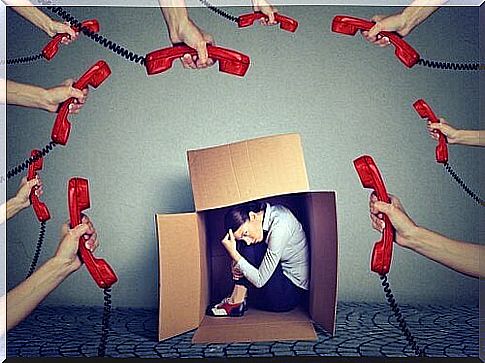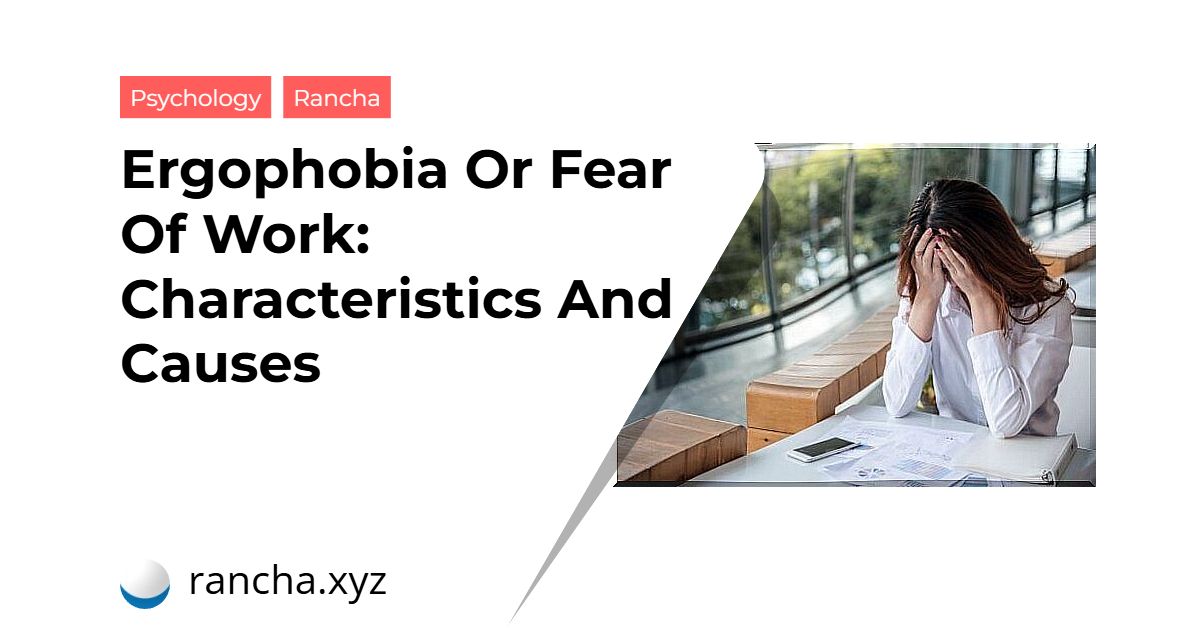There are hundreds of phobias, some better known and some less so. Among them we find ergophobia. Ergophobia is a specific phobia characterized by an irrational and excessive work-related fear.
People who suffer from ergophobia often experience very strong anxiety symptoms when they get ready to go to work. The suffering this causes is so great that this fear prevents them from going to their place of work or forces them to return home in the middle of the day.
What are the characteristics of specific phobias?
Phobias are defined as an intense and irrational fear of a person, object or situation that involves little or no danger. The word derives from the Greek term phobos, which means panic.
In Greek mythology, Phobos was also the son of Ares, the god of war, and of Aphrodite, the goddess of love. He personified fear. Alexander the Great prayed to Phobos before each battle to get away from fear.
When we talk about ergophobia, we are referring to a specific phobia, which is characterized by fear or anxiety related to clearly delimited objects or situations, which can be called phobic stimuli. In this case, it would be all those stimuli related to the situation of going to work or being in the workplace.

Ergophobia, like the rest of specific phobias, has some characteristics, such as the following:
- Intense fear or anxiety about an object or a specific situation (eg, flying, high places, animals, having an injection, seeing blood, etc.).
- The phobic object or situation almost always provokes immediate fear or anxiety.
- The phobic situation is avoided or actively resisted with fear or intense anxiety.
- Fear or anxiety is disproportionate if we analyze the real danger posed by the specific object or situation and the sociocultural context.
- Fear, anxiety, or avoidance is persistent, and typically lasts for six months or more.
- Anxiety, fear or avoidance cause clinically significant discomfort or deterioration in the social, professional or other areas important to the individual’s functioning.
It is common for people to have several specific phobias. Approximately 75% of people with a specific phobia fear more than one situation or object.
Specific characteristics of ergophobia
One can experience the feeling of anxiety at work to different degrees. This is not pathological and even normal depending on the type of work we do. In other words, these sensations have a certain relationship with the characteristics of our job.
However, the person suffering from ergophobia has an excessive and irrational fear of their workplace. This fear is far greater than that of any other employee. Furthermore, people with ergophobia recognize that their fear is not rational, it is totally disproportionate.
Those with ergophobia are aware that their anxiety about work is irrational, they don’t need anyone to convince them of this. However, he can’t help but feel paralyzing fear on most occasions. These people are unable to control their anxiety. It appears automatically when the threatening stimulus appears, and the person becomes a hostage to the panic, being unable to do practically anything to remedy this situation.

In order to diagnose ergophobia, a person has to be persistently afraid of work. This means that she will always feel fear or fear, regardless of changes in the characteristics of her job.
Another characteristic of ergophobia is avoidance. The person who suffers from work phobia strives to avoid at all costs any stimulus related to it, which can lead to job loss in the most serious cases.
Causes of Ergophobia
As with specific phobias, ergophobia develops due to some mechanisms common to the rest of phobias. It may happen that the person suffering from ergophobia has suffered a negative event at work. However, phobias can also be “learned” by other mechanisms.
Phobias can be acquired directly (through some negative experience lived by the person who suffers from it), or indirectly (the person or someone tells them about some traumatic event). Most commonly, the ergophobia was caused by a direct conditioning experience.
A conditioning experience is an association between two stimuli. When stimulus 1 is presented, stimulus 2 appears. In the case discussed, a person may have suffered a bad experience in his workplace due to bad luck. Then, the person associates the workplace with this negative experience.
As a result of this association, stimuli related to the work place gain negative properties from the experience suffered. So, every time a person is faced with a work-related stimulus, he reacts to these stimuli with symptoms of anxiety (anxiety, fear, catastrophic thoughts, sweating, etc.).
As the person wants to avoid or escape these anxiety responses, he will avoid any stimulus related to his work place. Every time she avoids or escapes, she’ll feel better. Then, you will learn that avoiding or escaping these stimuli gives you tranquility and well-being.

Can ergophobia be cured?
The treatment of ergophobia, like the rest of other specific phobias, is well defined. The treatment of choice for any type of phobia is exposure with response prevention. The fact of exposing ourselves to the stimulus we fear will make our anxiety lessen and we can break the association explained above.
If you believe you may be suffering from ergophobia, we advise you to consult an expert psychologist. He will give you the guidelines to get back to normal, so you can go to your place of work as you always did before.
 rancha.xyz Be free to choose their own route to self-knowledge, health and balance of body and soul.
rancha.xyz Be free to choose their own route to self-knowledge, health and balance of body and soul.




